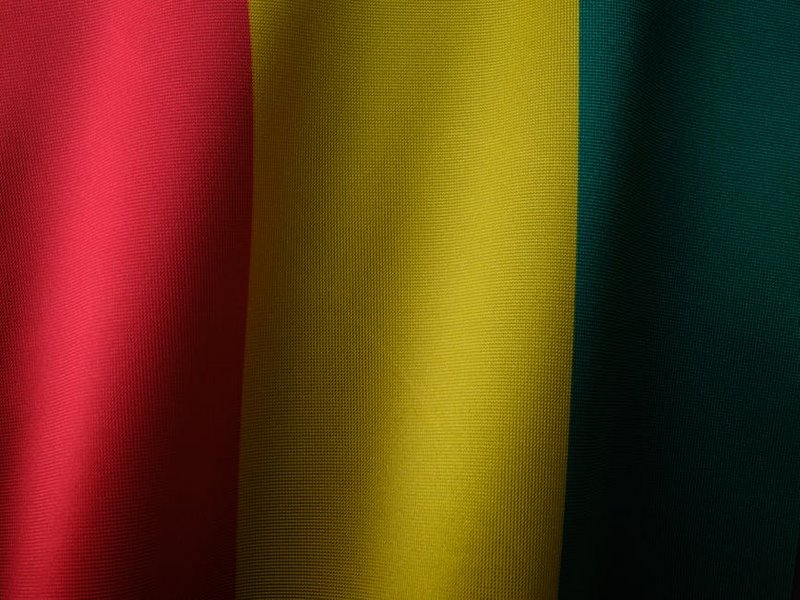Exploring the Guinea Fouta Djallon Highlands: Your Ultimate Adventure Guide
Imagine standing atop lush green plateaus where waterfalls cascade into misty valleys and traditional villages dot the landscape—this is the Guinea Fouta Djallon Highlands, one of West Africa’s best-kept secrets. As you plan your journey to this remarkable region, you’ll discover why adventure seekers and nature lovers flock here for its unparalleled hiking trails, rich cultural heritage, and breathtaking scenery. The Guinea Fouta Djallon Highlands offer a unique escape from crowded tourist destinations, allowing you to immerse yourself in authentic experiences while exploring dramatic landscapes shaped by ancient geological forces. You’ll find yourself navigating through dense forests, crossing crystal-clear rivers, and interacting with welcoming local communities who maintain centuries-old traditions. This guide will walk you through everything from practical travel tips to hidden gems, ensuring your trip becomes an unforgettable adventure. Whether you’re a seasoned hiker or a curious traveler seeking new horizons, the Guinea Fouta Djallon Highlands promise to deliver moments of pure wonder and discovery that will stay with you long after you return home.
Guinea Fouta Djallon Highlands Essential Information – Getting to Know the Region
Before diving into your adventure, understanding the Guinea Fouta Djallon Highlands’ geography and climate will help you prepare effectively. This vast highland region spans approximately 80,000 square kilometers across central Guinea, featuring an average elevation of 900 meters with peaks reaching over 1,500 meters. You’ll encounter a tropical climate with distinct wet and dry seasons, where temperatures typically range from 15°C to 30°C (59°F to 86°F) depending on altitude and time of year. The highlands serve as the source of several major West African rivers, including the Niger, Senegal, and Gambia, earning them the nickname “the water tower of West Africa.” Historically, the area has been inhabited by the Fula people, who have developed a rich cultural tapestry visible in their architecture, music, and daily life. As you explore, you’ll notice how the landscape transitions from rolling hills and deep gorges to expansive plateaus, each offering unique ecosystems and biodiversity. This diversity makes the Guinea Fouta Djallon Highlands a paradise for eco-tourism and sustainable travel initiatives that benefit local communities.
Geography and Climate – What Shapes the Landscape
- The highlands feature lateritic plateaus and sandstone formations that create stunning natural amphitheaters and cliffs, perfect for photography and exploration.
- You’ll experience a humid subtropical climate with heavy rainfall from June to October, making the landscape exceptionally lush but requiring waterproof gear for hiking.
- Biodiversity hotspots include montane forests and savannahs home to unique flora like wild coffee and fauna such as primates and numerous bird species, ideal for wildlife enthusiasts.
- Budget travelers can expect daily costs of $30-50 USD covering basic guesthouses, local meals, and public transport, with guided hikes adding $20-40 per day.
- Mid-range options include comfortable lodges and private tours costing $70-120 USD daily, offering better amenities and English-speaking guides for enhanced experiences.
- Luxury adventures with all-inclusive packages range from $150-300 USD per day, featuring upscale eco-lodges, private vehicles, and customized itineraries for maximum comfort.
- Official Guinea Tourism Authority
- Wikipedia on Fouta Djallon
- Lonely Planet Guinea Guide
Historical and Cultural Significance – Roots of the Region
Delving into the history of the Guinea Fouta Djallon Highlands reveals a fascinating blend of pre-colonial empires and Islamic influences that shape modern culture. The region was once the heart of the Fouta Djallon state, a theocratic kingdom established in the 18th century, and you can still see remnants of this era in ancient mosques and traditional compounds. Today, the Fula people dominate the cultural landscape, practicing pastoralism and agriculture while preserving oral histories and crafts like weaving and pottery. As you travel through villages, you’ll witness vibrant festivals and music performances that celebrate harvests and religious events, offering glimpses into communal life. Understanding these cultural nuances will enrich your experience, allowing you to connect more deeply with locals who often share stories over cups of sweet tea. This cultural immersion makes the Guinea Fouta Djallon Highlands not just a natural wonder but a living museum of West African heritage.

Guinea Fouta Djallon Highlands Planning Your Trip – Timing and Budget Essentials
Planning your trip to the Guinea Fouta Djallon Highlands requires careful consideration of seasons, budgets, and logistics to maximize your enjoyment. You’ll want to balance adventure with comfort, as infrastructure can be basic in remote areas, but the rewards outweigh the challenges. Start by deciding when to visit; the dry season from November to March offers the best conditions for hiking and sightseeing, with clear skies and moderate temperatures. However, if you prefer lush greenery and fewer tourists, the early wet season in April and May might appeal to you, though trails can be slippery. Budget-wise, Guinea is generally affordable for Western travelers, but costs can vary based on your travel style—backpackers can manage on a shoestring, while those seeking guided tours and better accommodations should allocate more funds. Remember to factor in visas, vaccinations, and travel insurance, as these are crucial for a smooth journey. By planning ahead, you’ll ensure that your Guinea Fouta Djallon Highlands adventure is both safe and memorable, allowing you to focus on the incredible experiences awaiting you.
Best Time to Visit Guinea Fouta Djallon Highlands
Choosing the ideal time for your Guinea Fouta Djallon Highlands trip depends largely on your preferences for weather and crowd levels. The peak season runs from December to February, when dry conditions and cooler temperatures make hiking and outdoor activities most pleasant, with average highs around 25°C (77°F). During these months, you’ll enjoy clear views of waterfalls and landscapes, but be prepared for higher accommodation prices and more tourists at popular sites. If you’re on a budget or prefer solitude, consider visiting in November or March, which offer a balance of good weather and fewer visitors. The wet season from June to October transforms the highlands into a verdant paradise, but heavy rains can make trails muddy and some areas inaccessible, though this period showcases the region’s waterfalls at their most powerful. Ultimately, the best time aligns with your adventure goals—whether it’s trekking in ideal conditions or witnessing the dramatic green transformation.
Budget Planning and Costs
Essential Preparation Checklist
Preparing for your Guinea Fouta Djallon Highlands journey involves several key steps to ensure safety and enjoyment. First, check visa requirements; most Western passport holders need a visa obtained in advance from Guinean embassies, costing around $75-100 USD and requiring proof of yellow fever vaccination. You should also pack appropriately—bring lightweight, breathable clothing for daytime hikes, plus warmer layers for cooler evenings, and sturdy waterproof hiking boots for variable terrain. Don’t forget essentials like a first-aid kit, water purification tablets, and high-SPF sunscreen, as medical facilities are limited in rural areas. It’s wise to learn basic French phrases, as it’s the official language, though local languages like Pular are widely spoken; this will help you connect with communities. Finally, arrange comprehensive travel insurance that covers adventure activities and medical evacuation, giving you peace of mind as you explore this rugged paradise.
Guinea Fouta Djallon Highlands Top Attractions and Activities – Must-Do Adventures
Your itinerary for the Guinea Fouta Djallon Highlands should include a mix of iconic sights and off-the-beaten-path experiences that showcase the region’s diversity. From majestic waterfalls to cultural encounters, each activity offers a unique perspective on this enchanting landscape. You’ll want to prioritize hiking, as the highlands are crisscrossed with trails that lead to viewpoints, villages, and natural wonders, often requiring moderate fitness levels but rewarding you with unforgettable vistas. Don’t miss the chance to engage with local guides who can share insights into the ecology and history, enhancing your understanding of the area. Additionally, water-based activities like swimming in natural pools or rafting on rivers provide refreshing breaks from trekking, while visits to weekly markets immerse you in the vibrant local economy. By blending adventure with cultural immersion, you’ll create a rich tapestry of memories that highlight why the Guinea Fouta Djallon Highlands are a premier destination for intrepid travelers.
Must-See Highlights – Iconic Sights You Can’t Miss
Among the must-see highlights in the Guinea Fouta Djallon Highlands, the Chutes de la Sala (Sala Falls) stand out with their thunderous 75-meter drop into a serene pool, accessible via a scenic hike through lush forests. You’ll also want to visit the Dounet Falls, another spectacular cascade surrounded by picnic spots where you can relax and enjoy the sounds of nature. The town of Dalaba serves as a gateway to many attractions, including the Presidential Palace gardens and the Source du Niger, where you can see the beginning of West Africa’s great river. For panoramic views, hike to the peak of Mount Loura, which offers 360-degree vistas of the highlands, especially stunning at sunrise or sunset. These iconic sites represent the essence of the Guinea Fouta Djallon Highlands, combining natural beauty with accessible adventures that cater to all fitness levels.
Hidden Gems and Local Favorites
Venturing beyond the main attractions reveals hidden gems in the Guinea Fouta Djallon Highlands that offer authentic and less crowded experiences. Seek out the village of Doucki, where you can stay in traditional Fula huts and participate in daily activities like milking cows or weaving, providing a deep cultural connection. Another local favorite is the Kambadaga Falls, a series of smaller cascades nestled in a secluded valley, perfect for a peaceful swim away from tourist groups. You might also explore the caves near Labe, which hold historical significance and are adorned with ancient rock art, though hiring a guide is essential for navigation. These spots allow you to experience the Guinea Fouta Djallon Highlands through the eyes of residents, fostering meaningful interactions and uncovering the region’s quieter, equally captivating side.
Guinea Fouta Djallon Highlands Practical Travel Information – Logistics and Accommodation
Navigating the practical aspects of travel in the Guinea Fouta Djallon Highlands ensures a smooth and enjoyable trip, from transportation to lodging options. You’ll find that while the region is developing for tourism, it retains a rustic charm that requires flexibility and preparation. Transportation primarily relies on shared taxis and buses between major towns like Labe and Dalaba, but for remote areas, hiring a 4×4 vehicle or joining guided tours is advisable due to rough roads. Accommodation ranges from basic homestays to eco-lodges, with prices reflecting the level of comfort and services provided. It’s important to carry cash in Guinean francs or euros, as credit cards are rarely accepted outside major hotels, and ATMs are sparse. By understanding these logistics, you can focus on the adventures ahead, knowing that you’re well-equipped to handle the nuances of travel in this captivating region.
| Category | Options/Features | Price Range (USD) |
|---|---|---|
| Accommodation | Basic guesthouses with shared facilities, homestays with local families, eco-lodges with private rooms | $15-50 per night |
| Transportation | Shared taxis between towns, bus services, private 4×4 rentals, motorcycle taxis for short distances | $5-100 per day |
| Food & Dining | Local eateries serving rice and sauce dishes, street food, lodge restaurants with Western options | $5-20 per day |


